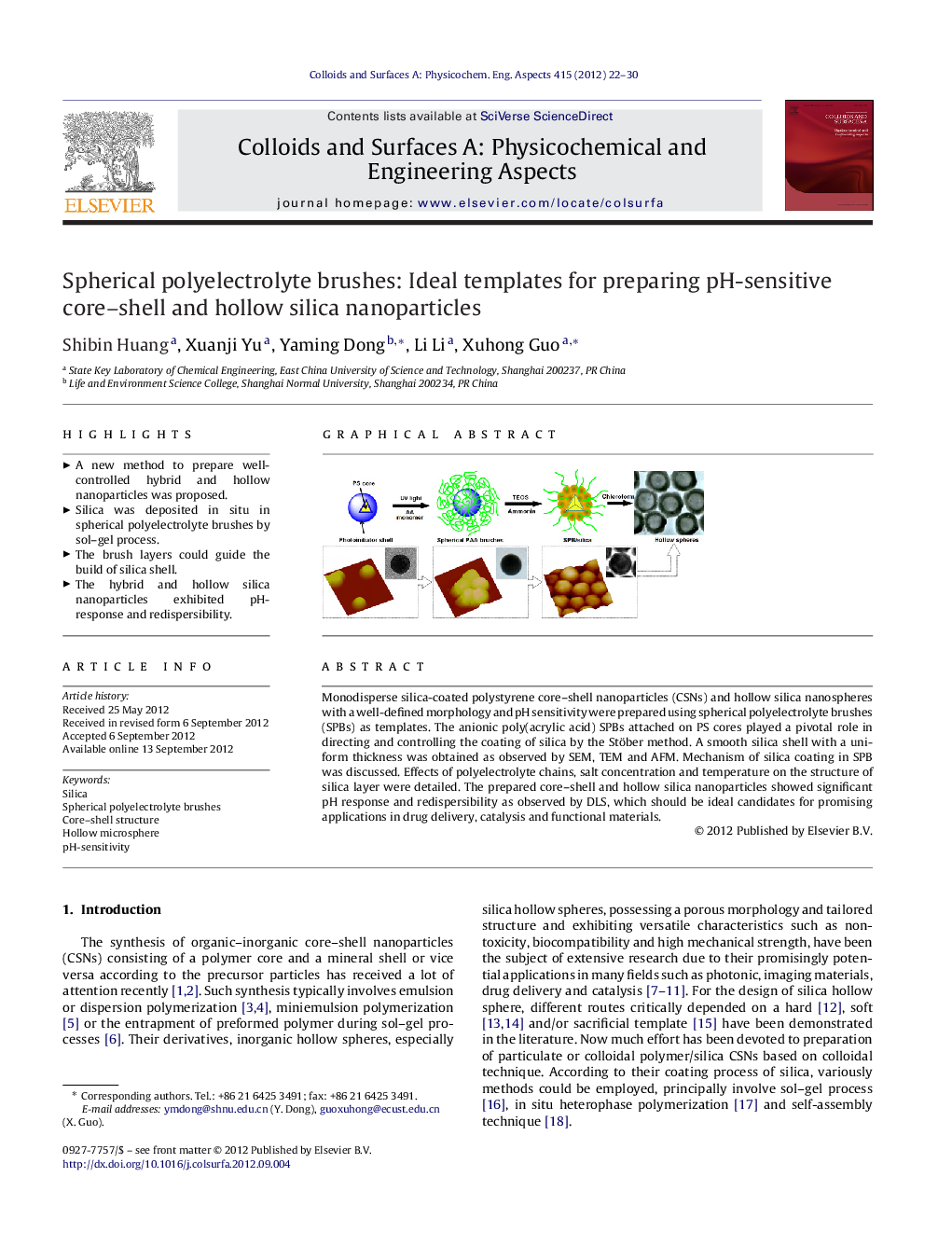| Article ID | Journal | Published Year | Pages | File Type |
|---|---|---|---|---|
| 593869 | Colloids and Surfaces A: Physicochemical and Engineering Aspects | 2012 | 9 Pages |
Monodisperse silica-coated polystyrene core–shell nanoparticles (CSNs) and hollow silica nanospheres with a well-defined morphology and pH sensitivity were prepared using spherical polyelectrolyte brushes (SPBs) as templates. The anionic poly(acrylic acid) SPBs attached on PS cores played a pivotal role in directing and controlling the coating of silica by the Stöber method. A smooth silica shell with a uniform thickness was obtained as observed by SEM, TEM and AFM. Mechanism of silica coating in SPB was discussed. Effects of polyelectrolyte chains, salt concentration and temperature on the structure of silica layer were detailed. The prepared core–shell and hollow silica nanoparticles showed significant pH response and redispersibility as observed by DLS, which should be ideal candidates for promising applications in drug delivery, catalysis and functional materials.
Graphical abstractFigure optionsDownload full-size imageDownload as PowerPoint slideHighlights► A new method to prepare well-controlled hybrid and hollow nanoparticles was proposed. ► Silica was deposited in situ in spherical polyelectrolyte brushes by sol–gel process. ► The brush layers could guide the build of silica shell. ► The hybrid and hollow silica nanoparticles exhibited pH-response and redispersibility.
